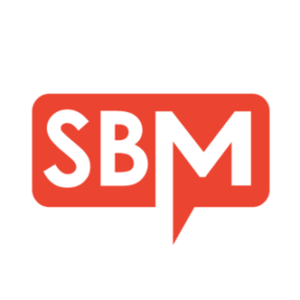Marketing automation can be described as the use of technology to streamline your marketing activities. The idea is to use software applications to automate repetitive tasks, thereby reducing the amount of time required to facilitate marketing workflows.
Most school marketing departments use automation for email and social media marketing. The use of technology makes these tasks easier and accessible to audiences 24/7.
The goal of marketing automation is to nurture prospective families using a personalized strategy. Marketing automation that is on point should nurture leads well enough to encourage them to want to learn more about your school and reach out to you via various channels, depending on what’s most comfortable for the family member. It also should continue to play an essential role in retaining your enrolled families.
For this reason, families should be at the center of your marketing automation strategy. Marketing automation campaigns that are well-designed will increase the number of inquiries (and, hopefully, enrollments) as well as speed up the lead conversion process.
One of the major challenges of marketing automation is the misconception that it will solve all your marketing needs. This mindset often leads school marketing departments to develop sophisticated middle-of-the-funnel activities, but no solution for top-of-the-funnel lead generation. This means not enough leads are embarking on the customer journey in the first place, leading to low numbers of inquiries and enrollments.
Despite the issues users experience, marketing automation is a powerful marketing trend, one that will definitely continue to grow in the future. As more and more marketers adopt automation strategies and tools, engineers will develop smarter algorithms with more sophisticated learning capabilities. Certainly, marketing automation is here to stay and we can expect it to continue to evolve, offering more efficiencies.
Here are 10 reasons school marketers should be using marketing automation strategies and tools.
1. Time savings
Setting up lead nurturing and marketing campaigns using marketing automation saves time. By creating marketing activities that are automatically triggered based on specific criteria, your school might be responding to hundreds of inquiries and building prospective family subscriber lists in the thousands in a relatively short amount of time.
2. Enrollments
By automating your marketing activities, you’ll notice an increase in your admissions. When you combine this with better lead management, it’s likely your inquiries will be more likely to lead to enrollments.
3. Accountability
Marketing automation is useful for tracking and analyzing data. Understanding how your inquiry-generation processes work will help you identify barriers. If your automated systems are capturing prospective families but the nurturing processes aren’t working, your department will be able to see these bottlenecks through regular reports. This feedback system can shorten the amount of time issues are resolved and improve outcomes tremendously.
4. Effectiveness
No matter how large or small your team, your school likely has a limited amount of resources to earmark for marketing. Marketing automation allows you to leverage these resources, improving your productivity and efficiency.
5. Creativity
When you replace manual, repetitive work with automation, you will free up yourself and team members to focus more on strategy and creative marketing tactics. While this clearly will improve staff effectiveness, it also leads to a happier work environment and improves staff morale.
6. Refine marketing processes
One benefit marketing automation offers is requiring you to visualize your families’ journey from awareness to enrollment. Once you clearly understand their journeys, and have the empirical data you need, you can refine your marketing processes.
7. Multiple channels
Once you clearly understand your families’ enrollment journeys, you can identify how these journeys differ across various channels and parents’ communication preferences. For example, various marketing tools offer multi-channel outreach tools, such as sending:
- Postcard (snail mail)
- Text message
- Message via social media
- Phone call.
8. Split testing
Marketing automation makes it easy to A/B test your marketing campaigns. Over time, you will be able to identify the incremental improvements of your marketing activities, allow you to make adjustments and improve your results.
9. Social media scheduling
Most marketing automation tools allow teams to manage social media campaigns within a single dashboard, including scheduling posts to multiple channels at once. Many use a calendar system to make it easy to view, and review, your scheduled posts. This makes it easy to stay organized and make changes if necessary. Most marketing automation tools offer a drag-and-drop feature, enabling you to easily build email campaigns, landing pages and social campaigns.
10. Reporting
Marketing automated software excels at providing data and reports. Most tools will tell you exactly which activities are working (and how well) and which targeted audiences they worked for. This level of information allows to you make wise decisions about where to focus your efforts.
While most school marketing teams are using some marketing automation, it may be time for you to consider more sophisticated tools, or adding to your existing applications. Some of the automation tools I suggest you consider include:
– Hubspot
In my opinion, Hubspot is the gold standard for implementing inbound marketing for schools. This software has my highest recommendation. Hubspot is a full marketing, sales and customer service software; it includes everything a marketing needs to increase website traffic, convert prospective parents into leads and deliver a measurable return on investment.
– Buffer
Buffer is my do-it-all social media scheduling tool. This is a great tool for publishing social media posts and gathering analytic data to help you plan future social media campaigns.
– Tailwind for Pinterest
This is my favorite Pinterest management tool; I can’t imagine my Pinterest life without it. I love this tool because you can schedule pins to “drip” later, thereby increasing the number of times others pin your material.
– ConvertKit
ConvertKit is my recommended tool for nurturing leads. At its core, it’s an email marketing platform, but it also includes basic landing pages, automation, forms and lead nurturing, all at a great price. I use ConvertKit for my email list.
– Leadpages
Leadpages is my tool of choice for creating landing pages. I’ve tried various services over the years, and this one is the best. The price is reasonable, it’s incredibly easy to use, and the templates look appealing and professional. You can also easily A/B test your campaigns.
– OptinMonster
OptinMonster is a powerful optin conversion tool. What I love about it are the various options available for optins. You can also set different A/B testing variables. One feature I love is the display on exit intent (very cool). This is the tool I use on ScheiderB.com.
– Demio
My favorite webinar software is Demio. Believe me, I’ve tried every other webinar hosting service out there. It’s very stable and offers a great experience for presenters and attendees. This is the software I use for VirCon.
Certainly there are many other marketing automation tools on the market. These are my recommendations based on years of testing and trying different services and I’m confident they work as efficiently as possible. However, you may want to research automation tools on your own.
Need help deciding which automation software to invest in? Here is a list of suggested criteria for determining the best marketing automation software for your school.
– Features
Make sure the automation tool you choose will give you the capabilities you need. Looking for a CRM? Email automation? Landing pages? Webinar hosting? Other forms of content? Ecommerce for school merchandise? Social media integrations? Take the time to review the features to determine whether this is the right fit for your marketing needs.
– Pricing
Most marketing automation software services offers different levels based on features or volume. Some offer free trials or a “freemium” pricing strategy. Be sure to take advantage of trials or free levels to determine if the tool you’re considering will work for your team.
– Usability
Usability is likely the most important aspect for you to consider. Marketing automation tools are often complex and may have quite a learning curve. The less intuitive the tool, the more time and effort will be required to learn how to use it.
– Integration
It’s easy to overlook integration, but it can make a huge difference. Look for tools that easily integrate with your current software systems.
– Set-up and training
Make sure you select a tool that won’t cost you an arm and a leg to implement. Who will be installing the tool? What will training look like? If you’re not sure, reach out to a company representative who can give you a good idea of what type of a time and budget investment you’re looking at to get everything operating smoothly.
If you’re ready to take your school marketing to the next level, you may want to consider more sophisticated, dynamic and powerful platforms than you’re currently using in order to improve engagement and motivation of your prospective families. I hope these suggestions help you move forward in your marketing automation journey.
Are you currently using marketing automated software? What is one of your favorite tools and why do you recommend it for other school marketers? Please comment below…
Disclaimer: I am an affiliate for some of these resources which means that, at no cost additional to you, I make a commission if you purchase via my link.
Read more here…







